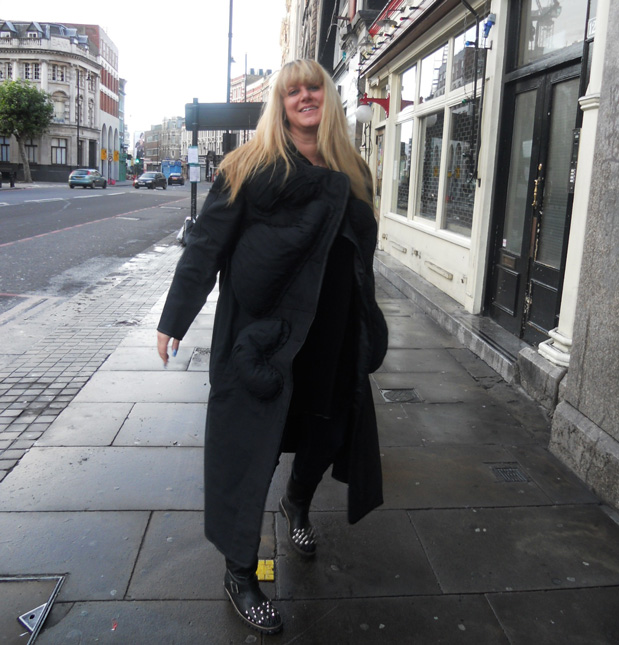
Honestly, what more can we say about Mandi Lennard, apart from the fact that we love her? We really do. The first time she came to ITS was for ITS#SEVEN together with designer Gareth Pugh who was in the jury. One year later we invited her to be part of the April pre-selections jury and that was it: WE COULDN’T DO WITHOUT HER FROM THAT MOMENT! Engaging, terribly smart, with an incredibly clear idea of what she likes and what she doesn’t like, which makes her super-sonic fast in viewing portfolios (but beware: fast doesn’t mean careless in her case), funny…Mandi has the qualities of the perfect friend anyone would love having around, it’s as if we’ve always had her at ITS even though it’s few years we’ve known her now.
Earlier this year, Mandi Lennard relaunched her PR agency as brand consultancy Mandi’s Basement whose clients include: Barbie (Mattel), Bistrotheque, LOVE Magazine (Condé Nast), M·A·C Cosmetics, and Ponystep, amongst others. She set up Mandi Lennard Publicity in 1998, following a successful retail career that includes 6 years as a Buyer for London store Browns. Her agency became reputed for launching the newest creative talent into the international style marketplace, and recognised for promoting the creative hotbed of London’s East End. In December 2009, she was listed within ‘The Power 25’, a list of the 25 most powerful players in British fashion today, released by the British Fashion Council to coincide with their 25th anniversary. Mandi’s Basement is also the name of her blog on Colette’s website: www.blogs.colette.fr/mandi/
As you should know by now, our interviews are mainly intended to discover our jurors’ point of view on creativity and on the international young talent scene. Reading all of their opinions should help you have a clearer understanding of what professionals in the field expect from young talents and how they relate to creativity. So here we go with Mandi’s contribution:

ITS: What is in your opinion creativity, and what does it mean in your life?
MANDI: It affects absolutely everything in my life, even the most mundane; I am continually challenging myself, and finding a solution is always a creative process. I am immersed in great creative talent every day in London’s East End; it excites you, and gives the area a great beat. Talent alone is not enough, it is how you execute it, how you manage it, whether you have the capability to be true to yourself.
ITS: Can you tell us about your experience at ITS?
MANDI: I feel so spoilt. It is far from a chore.Trieste is beautiful! The camaraderie amongst fellow jury members and the ITS family is: precious, contagious and profound, considering the great responsibility you are given in editing the finalists, and ultimately, affecting many lives. This is something that is constantly in your mind, so it becomes an emotional journey, but I enjoy the fact that I am taking from my wealth of experience in the industry and applying this to ITS. Every effort is made by ITS to ensure you are open yet objective with the decisions we take. I have particularly enjoyed the increasingly high standard of entries, which shows how far ITS has a reach internationally. On a personal level, it is heart-warming to see entries from countries with limited resources; it makes the task very real.
ITS: Do you like what you see in young designers today? Would you expect something more from them?
MANDI: I like to see an early hand-writing in their work, as this is a great basis upon which they can build in the future. With the internet and information they have access to, they are probably more savvy about the industry and even about what we are maybe looking for from them.

ITS: Looking back at your career and seeing the young talents of today, what is the best advice you feel you can give them, apart from believing in what they do?
MANDI: I can listen and give them impartial advice; there’s so many areas, such as trying to ensure early stockists are prolific, as where you sell, and the stores you are associated with, can affect how they are regarded; helping them sow those early first seeds of building a brand, considering their visual identity, price points, production, and also how to deal with situations such as a manufacturer making a late delivery. But I should point out that we see every scenario at ITS. There are some designers who have their identity nailed, and impressively so; everyone has strengths in differing areas, and one of the first things you can do to help yourself as a designer is to recognise this, and creatively work out how to compensate for areas you find more difficult – creatively there is always a solution, and often allowing a situation to unfold rather than force it can help reach the right conclusion.